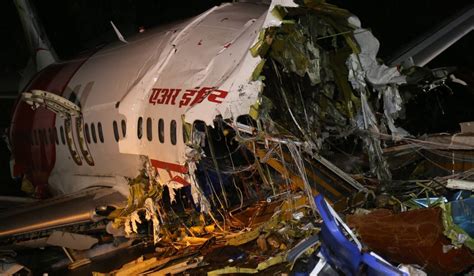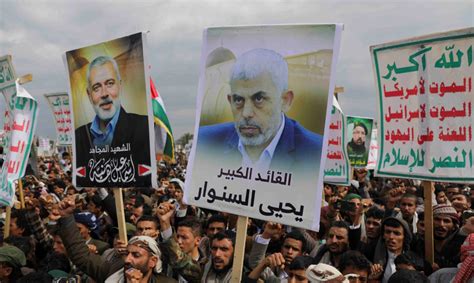
A surveillance camera captured the moment an Air India Express flight crashed upon takeoff from Tiruchirappalli International Airport in India, damaging the perimeter wall of the airport. The flight, carrying 136 passengers, all of whom survived, was headed to Dubai on October 12th.
Dramatic CCTV footage has emerged showing the Air India Express flight IX611 scraping the airport perimeter wall shortly after takeoff, prompting an emergency landing. The incident, which occurred early Friday morning, caused significant damage to the aircraft and the wall, but remarkably, all 136 passengers and crew on board survived.
The video, widely circulated on social media, shows the aircraft lifting off the runway, appearing to struggle for altitude before its underside collides with the brick perimeter wall. Debris from the wall can be seen scattering as the plane continues its ascent. The aircraft subsequently circled back to Tiruchirappalli and made a safe landing approximately three hours later.
“The Air India Express IX611, Trichy to Dubai flight, had a tail strike while taking off from Trichy Airport. The aircraft continued to fly as pilot in command Capt D Ganesh Babu and co-pilot Capt Anurag managed the situation well,” Air India Express said in a statement.
Following the incident, both pilots were grounded pending an investigation by the Directorate General of Civil Aviation (DGCA), India’s aviation regulatory body. Air India Express confirmed that an investigation is underway to determine the cause of the tail strike.
The incident has raised questions about safety protocols and procedures at the airport, particularly regarding obstacle clearance and takeoff procedures. The DGCA is expected to scrutinize the flight data recorder (FDR) and cockpit voice recorder (CVR) to ascertain the precise sequence of events leading up to the collision.
“We are relieved that all passengers and crew are safe. Safety is our paramount concern, and we are cooperating fully with the authorities in their investigation,” an Air India Express spokesperson stated.
The aircraft involved, a Boeing 737-800, sustained damage to its undercarriage and fuselage. Preliminary assessments indicate that the tail strike occurred due to a combination of factors, including potentially a misjudgment of the takeoff angle or an unexpected wind shear.
The event has prompted a renewed focus on pilot training and adherence to standard operating procedures (SOPs) within Air India Express. Aviation experts have emphasized the importance of regular simulator training and proficiency checks to ensure pilots are adequately prepared to handle unforeseen circumstances.
The incident is a stark reminder of the potential risks associated with air travel and underscores the critical role of robust safety oversight and adherence to international aviation standards. The DGCA’s investigation is expected to provide valuable insights into the root cause of the accident and will likely result in recommendations for preventing similar incidents in the future.
While all passengers were reported safe, several experienced minor injuries during the impact. They were provided with medical assistance upon landing. Air India Express arranged for an alternative flight to Dubai for the stranded passengers.
The CCTV footage provides crucial visual evidence that will aid investigators in piecing together the events leading up to the accident. The footage clearly shows the angle of takeoff and the point of impact with the perimeter wall, offering valuable clues about the aircraft’s trajectory and performance.
The incident occurred at approximately 1:20 AM local time. The relatively quiet time of day meant there were fewer people in the vicinity of the airport, which likely contributed to the absence of ground casualties.
The airport authorities immediately initiated emergency protocols following the tail strike, alerting emergency services and preparing for the aircraft’s return. The swift response of the airport personnel is credited with helping to ensure a safe landing and minimizing potential harm to passengers and crew.
The event has also sparked debate about the location and design of airport perimeter walls, with some critics arguing that they should be positioned further away from the runway to provide a greater margin of safety. However, airport authorities maintain that the perimeter wall met all regulatory requirements and safety standards.
The focus now shifts to the DGCA’s investigation, which will involve a detailed examination of the aircraft’s maintenance records, pilot training history, and air traffic control communications. The investigation is expected to take several weeks, if not months, to complete.
The incident serves as a reminder of the importance of continuous improvement in aviation safety. Air India Express, along with other airlines, will likely review its safety protocols and procedures in light of the accident. The ultimate goal is to prevent similar incidents from occurring in the future and to ensure the safety of passengers and crew.
The Boeing 737-800 aircraft involved in the incident has a strong safety record overall, but this incident highlights the potential for even well-maintained aircraft to be involved in accidents. The investigation will seek to determine whether any mechanical or technical issues contributed to the tail strike.
In the aftermath of the incident, Air India Express offered counseling services to passengers who were traumatized by the experience. The airline also provided compensation to passengers for any losses or inconveniences they may have suffered.
The local community around Tiruchirappalli International Airport expressed relief that no one was seriously injured in the incident. Many residents have voiced their support for the pilots and crew, praising their skill and professionalism in handling the emergency situation.
The incident is not expected to have a long-term impact on Air India Express’s operations. The airline has a strong safety record and is committed to maintaining high standards of safety and reliability. However, the incident will undoubtedly lead to a review of safety procedures and a renewed focus on pilot training.
The DGCA’s investigation will also examine the role of air traffic control in the incident. Investigators will review communication logs and radar data to determine whether air traffic controllers provided adequate guidance and support to the pilots during the takeoff.
The perimeter wall that was damaged in the incident has been temporarily repaired. Airport authorities are planning to construct a new, stronger wall in the near future.
The incident has generated significant media coverage both in India and internationally. Aviation experts have been interviewed by news outlets around the world, providing insights into the potential causes of the tail strike and the implications for aviation safety.
The accident serves as a reminder that aviation safety is a complex and multifaceted issue that requires constant vigilance and attention to detail. All stakeholders, including airlines, regulators, and airport authorities, must work together to ensure the safety of air travel.
Air India Express has a fleet of Boeing 737-800 aircraft, which are widely used for short- and medium-haul flights. The aircraft are known for their reliability and fuel efficiency. However, like all aircraft, they require regular maintenance and inspections to ensure they are safe to fly.
The incident has also raised questions about the availability of emergency services at Tiruchirappalli International Airport. Some critics have argued that the airport needs to invest in additional emergency equipment and personnel to be better prepared for future incidents.
The DGCA’s investigation will likely examine the airport’s emergency response plan to determine whether it was adequate and effective. The investigation may also result in recommendations for improving the airport’s emergency response capabilities.
The incident is a reminder of the importance of pilot training and proficiency. Pilots must be able to handle a wide range of emergency situations, including engine failures, turbulence, and other unexpected events. Regular simulator training and proficiency checks are essential to ensure that pilots are adequately prepared.
The accident has also highlighted the importance of communication between pilots and air traffic controllers. Clear and concise communication is essential for ensuring the safety of air travel. Pilots and air traffic controllers must be able to communicate effectively in all situations, including emergencies.
The DGCA’s investigation will likely examine the communication logs between the pilots and air traffic controllers to determine whether there were any communication breakdowns that may have contributed to the accident.
The incident is a reminder that aviation safety is a shared responsibility. All stakeholders, including passengers, play a role in ensuring the safety of air travel. Passengers can help by following the instructions of the crew and by reporting any safety concerns they may have.
Air India Express has a strong commitment to safety. The airline has a comprehensive safety management system in place, which includes regular audits and inspections. The airline also invests heavily in pilot training and equipment.
The incident is not expected to affect Air India Express’s long-term growth plans. The airline is committed to expanding its operations and to providing safe and reliable air travel to its customers.
The DGCA’s investigation is expected to be completed within the next few months. The investigation will result in a report that will be made public. The report will include findings and recommendations for preventing similar incidents in the future.
The incident is a reminder that aviation accidents can happen even to the most experienced airlines. However, by learning from these accidents and by implementing appropriate safety measures, the aviation industry can continue to improve its safety record.
Air India Express has a team of experienced investigators who are working closely with the DGCA to determine the cause of the accident. The airline is committed to cooperating fully with the investigation and to implementing any recommendations that are made.
The incident is a reminder that aviation safety is a continuous process. Airlines and regulators must constantly be vigilant and must be willing to adapt to new challenges and threats.
Air India Express is committed to providing its passengers with a safe and comfortable travel experience. The airline will continue to invest in safety and to work closely with regulators to ensure the safety of its operations.
The incident has highlighted the importance of having a robust emergency response plan in place at airports. Airports must be prepared to respond quickly and effectively to any type of emergency, including aircraft accidents.
The DGCA’s investigation will likely examine the adequacy of the emergency response plan at Tiruchirappalli International Airport. The investigation may also result in recommendations for improving the airport’s emergency response capabilities.
The incident is a reminder that aviation safety is a global issue. Airlines and regulators around the world must work together to ensure the safety of air travel.
Air India Express is a member of the International Air Transport Association (IATA). IATA is a trade association that represents the world’s leading airlines. IATA works to promote aviation safety and to improve the efficiency of air travel.
The incident is a reminder that aviation accidents can have a significant impact on passengers and their families. Air India Express is committed to providing support to passengers and their families who have been affected by the accident.
The airline has established a helpline for passengers and their families. The helpline is staffed by trained counselors who can provide emotional support and assistance.
The incident is a reminder that aviation safety is a top priority for Air India Express. The airline will continue to invest in safety and to work closely with regulators to ensure the safety of its operations.
The accident serves as a learning experience for the aviation industry as a whole. By studying the causes of the accident and by implementing appropriate safety measures, the industry can continue to improve its safety record.
Air India Express is committed to sharing its findings with the aviation industry. The airline will participate in industry conferences and workshops to share its experiences and to learn from others.
The incident is a reminder that aviation safety is a journey, not a destination. There is always room for improvement, and airlines and regulators must constantly strive to make air travel even safer.
Air India Express is committed to being a leader in aviation safety. The airline will continue to invest in safety and to work closely with regulators to ensure the safety of its operations.
The incident is a reminder that aviation accidents can have a lasting impact on the aviation community. The airline is committed to supporting the families of those who have been affected by the accident.
Air India Express is a strong and resilient airline. The airline is confident that it will emerge from this incident stronger than ever.
The DGCA will release its final report on the incident to the public, which will provide more information about its causes and contributing factors.
Frequently Asked Questions (FAQ)
1. What exactly happened to the Air India Express flight IX611?
Air India Express flight IX611, en route from Trichy to Dubai, experienced a tail strike upon takeoff from Tiruchirappalli International Airport. The aircraft’s tail section collided with the airport’s perimeter wall during the initial ascent. Despite the impact, the pilots managed to safely return to the airport for an emergency landing.
2. Were there any casualties or injuries among the passengers and crew?
Remarkably, all 136 passengers and crew members on board the flight survived the incident. While some passengers reportedly experienced minor injuries during the impact, they received medical assistance upon landing. There were no reported fatalities or serious injuries.
3. What caused the Air India Express flight to hit the perimeter wall?
The exact cause of the tail strike is currently under investigation by the Directorate General of Civil Aviation (DGCA). Preliminary assessments suggest that a combination of factors may have contributed to the incident, including potentially a misjudgment of the takeoff angle, unexpected wind shear, or other technical malfunctions. The DGCA’s investigation will involve a detailed examination of the aircraft’s maintenance records, pilot training history, air traffic control communications, and flight data recorders to determine the precise sequence of events leading up to the collision.
4. What is the current status of the pilots involved in the incident?
Following the incident, both pilots of the Air India Express flight IX611 were grounded pending the outcome of the DGCA’s investigation. This is a standard procedure in such cases to allow for a thorough and impartial inquiry into the events leading up to the tail strike. The pilots’ licenses may be suspended or revoked depending on the findings of the investigation.
5. What actions have been taken by Air India Express and regulatory authorities in response to this incident?
Air India Express has launched its own internal investigation into the incident and is cooperating fully with the DGCA’s inquiry. The airline has arranged for an alternative flight for the stranded passengers and offered counseling services to those who were traumatized by the experience. The DGCA is conducting a comprehensive investigation to determine the root cause of the accident and will likely issue recommendations for preventing similar incidents in the future. These recommendations may include changes to pilot training procedures, airport safety protocols, or aircraft maintenance schedules.
Expanded Analysis and Context
The Air India Express incident underscores the inherent risks associated with aviation and the critical importance of rigorous safety oversight. While commercial aviation is statistically one of the safest modes of transportation, accidents can and do happen, often with devastating consequences. This incident serves as a stark reminder that even seemingly minor incidents, such as a tail strike, can have the potential to escalate into much more serious situations.
The Role of Human Factors:
Aviation accidents are rarely caused by a single factor. More often, they are the result of a complex interplay of human factors, mechanical failures, and environmental conditions. Human factors, such as pilot fatigue, miscommunication, and errors in judgment, play a significant role in many aviation accidents.
In the case of the Air India Express incident, the DGCA’s investigation will likely focus on the human factors that may have contributed to the tail strike. This will involve examining the pilots’ training records, their experience levels, and their performance on the day of the incident. Investigators will also review the communication logs between the pilots and air traffic controllers to determine whether there were any communication breakdowns that may have contributed to the accident.
The Importance of Maintenance and Inspection:
Aircraft maintenance and inspection are critical for ensuring the safety of air travel. Airlines are required to adhere to strict maintenance schedules and to conduct regular inspections of their aircraft. These inspections are designed to detect any potential problems before they can lead to an accident.
The DGCA’s investigation will also examine the maintenance records of the Boeing 737-800 aircraft involved in the Air India Express incident. Investigators will be looking for any signs of mechanical problems or defects that may have contributed to the tail strike.
The Role of Technology:
Advances in technology have played a significant role in improving aviation safety over the years. Modern aircraft are equipped with sophisticated systems that can help pilots to avoid accidents. These systems include terrain awareness and warning systems (TAWS), traffic collision avoidance systems (TCAS), and autopilot systems.
The DGCA’s investigation will also examine the role of technology in the Air India Express incident. Investigators will be looking at whether the aircraft’s systems were functioning properly and whether the pilots were using them effectively.
The Impact of Weather:
Weather conditions can also play a significant role in aviation accidents. Strong winds, heavy rain, and poor visibility can all make it more difficult for pilots to control their aircraft.
In the case of the Air India Express incident, investigators will be looking at the weather conditions at Tiruchirappalli International Airport at the time of the takeoff. They will be looking for any evidence of wind shear or other adverse weather conditions that may have contributed to the tail strike.
The Importance of Training:
Pilot training is essential for ensuring the safety of air travel. Pilots must be trained to handle a wide range of emergency situations, including engine failures, turbulence, and other unexpected events. Regular simulator training and proficiency checks are essential to ensure that pilots are adequately prepared.
The DGCA’s investigation will also examine the training that the pilots of the Air India Express flight IX611 received. Investigators will be looking at whether the pilots were adequately trained to handle the type of situation that they encountered.
Airport Infrastructure and Safety Standards:
The design and maintenance of airport infrastructure also play a crucial role in aviation safety. Factors such as runway length, obstacle clearance, and the placement of perimeter walls can all affect the safety of takeoff and landing operations.
The location of the perimeter wall in relation to the runway at Tiruchirappalli International Airport will likely be scrutinized as part of the investigation. The proximity of the wall may have reduced the margin for error during the takeoff, potentially contributing to the tail strike.
The Economic and Reputational Impact:
Aviation accidents can have significant economic and reputational consequences for airlines. The cost of repairing or replacing damaged aircraft, compensating passengers, and conducting investigations can be substantial. In addition, an accident can damage an airline’s reputation and lead to a decline in passenger bookings.
Air India Express will likely face significant financial and reputational challenges as a result of the incident. The airline will need to take steps to restore public confidence in its safety record and to mitigate the economic impact of the accident.
The Broader Context of Aviation Safety in India:
India’s aviation industry has experienced rapid growth in recent years, driven by rising incomes and increased demand for air travel. However, this growth has also put pressure on the country’s aviation infrastructure and regulatory oversight.
The Air India Express incident highlights the need for continued investment in aviation safety in India. This includes upgrading airport infrastructure, strengthening regulatory oversight, and improving pilot training programs.
Lessons Learned and Future Prevention:
The DGCA’s investigation into the Air India Express incident is expected to yield valuable lessons that can be used to prevent similar accidents in the future. The investigation will likely result in recommendations for improving pilot training, airport safety protocols, and aircraft maintenance schedules.
By learning from this incident and by implementing appropriate safety measures, the aviation industry can continue to improve its safety record and to ensure the safety of passengers and crew. The importance of continuous improvement in aviation safety cannot be overstated. It requires a collaborative effort from airlines, regulators, airport authorities, and other stakeholders. The goal is to create a culture of safety that prioritizes risk management, proactive prevention, and constant vigilance.
The aftermath of the Air India Express incident serves as a powerful reminder of the complex and multifaceted nature of aviation safety. It highlights the need for a holistic approach that considers human factors, mechanical reliability, environmental conditions, technological advancements, and infrastructure design. Only through a comprehensive and coordinated effort can the aviation industry continue to maintain its impressive safety record and ensure the well-being of passengers and crew. The commitment to safety must remain unwavering, driven by a shared responsibility to learn from past incidents and to implement proactive measures that prevent future tragedies.









